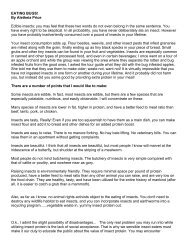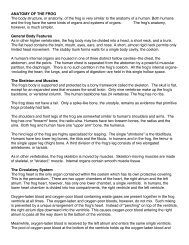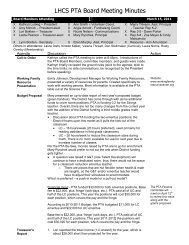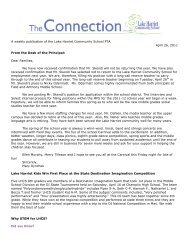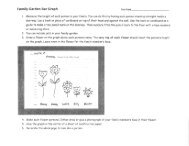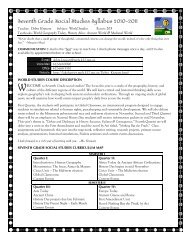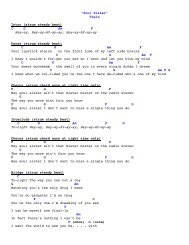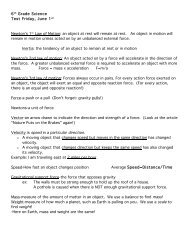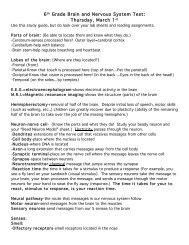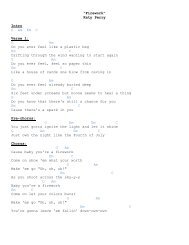FUR TRADE PROJECT-40 POINTS *Due Tues. Nov. 27, 2012
FUR TRADE PROJECT-40 POINTS *Due Tues. Nov. 27, 2012
FUR TRADE PROJECT-40 POINTS *Due Tues. Nov. 27, 2012
You also want an ePaper? Increase the reach of your titles
YUMPU automatically turns print PDFs into web optimized ePapers that Google loves.
MINNESOTA <strong>FUR</strong> <strong>TRADE</strong> BACKGROUND – MNHS<br />
AMERICAN INDIAN NATIONS traded along the<br />
Mississippi River for centuries before the arrival of<br />
Europeans in the mid-1600s. For nearly 200 years<br />
afterward, European traders exchanged<br />
manufactured goods with American Indian nations<br />
for valuable furs. Following the American<br />
Revolution, the U.S. competed fiercely with Great<br />
Britain for dominance of the North American fur<br />
trade. After the War of 1812 there were three<br />
main parties involved in the Northwest<br />
Territory's fur trade: American Indians (primarily<br />
the Dakota and Ojibwe), the fur trading companies,<br />
and the U.S. government. These parties worked<br />
together and each had something to gain from a<br />
stable trading environment. Both Fort Snelling and<br />
the Indian Agency were established at the river<br />
junction to help maintain stability of the region's fur<br />
trade.<br />
The DAKOTA AND OJIBWE were the primary<br />
trappers of fur-bearing animals in the Northwest<br />
Territory. They harvested a wide variety of furs<br />
(beaver the most valuable) in the region's woodlands<br />
and waterways. In exchange for these furs,<br />
French, British and U.S. traders provided goods<br />
such as blankets, firearms and ammunition, cloth,<br />
metal tools and brass kettles. The Dakota and<br />
Ojibwe had existed for thousands of years using<br />
tools made from readily available materials, but by<br />
the 1800s trade goods had become a part of daily<br />
life for many American Indian communities. Still,<br />
these trade goods often represented a trade-off:<br />
for example, metal trade knives may be more<br />
durable than traditional flint knives, but they were<br />
not as sharp. The main advantage of these trade<br />
goods lay in their availability. By the 1820s,<br />
however, some Dakota and Ojibwe communities<br />
had become dependent on trade goods for a<br />
certain level of prosperity and efficiency in their<br />
everyday lives. The fur trade had a tremendous<br />
effect on their cultures and influenced U.S.-<br />
American Indian economic and political relations<br />
and events in the 19th c.<br />
VOYAGEURS ("travelers" in French) were men hired<br />
to work for the fur traders to transport trade<br />
goods throughout the vast territory to rendezvous<br />
posts. At the rendezvous points these goods were<br />
exchanged for furs, which were then sent to larger<br />
cities for shipment to the east coast. Many traders<br />
and voyageurs married into American Indian<br />
communities, taking advantage of kinship networks,<br />
often trading exclusively within their particular<br />
community. As a result, large communities of<br />
individuals of diverse heritage developed, often called<br />
"mixed-bloods" or Métis during the period, and<br />
many of these individuals maintained ties to both fur<br />
trade and American Indian communities.<br />
SLAVERY also played a part in the fur trade, as some<br />
traders (including Henry H. Sibley and Jean-Baptiste<br />
Faribault) utilized slave labor. In some cases<br />
these enslaved people were freed by their masters,<br />
but often they remained part of the trade business.<br />
George Bonga was the son of a former slave and an<br />
Ojibwe woman and was active in the fur trade<br />
during the first half of the 1800s. Bonga was<br />
educated in Montreal and was well-known for his<br />
physical stature and strength. Often sought out for<br />
his skills as an interpreter, Bonga could speak<br />
French, English and Ojibwe. The Bonga family is<br />
just one example of the diversity and<br />
cultural exchange that resulted from the fur trade<br />
in the Northwest Territory.<br />
DECLINE: By the 18<strong>40</strong>s the fur trade had declined<br />
dramatically in the Minnesota region, partially due<br />
to changes in fashion tastes, the availability of lessexpensive<br />
materials for hat-making, and because<br />
Dakota and Ojibwe hunters had their available<br />
hunting grounds reduced through treaties with the<br />
U.S. government. Many fur traders took the<br />
opportunity to become land speculators, and<br />
economics in the region changed forever. For many<br />
Dakota and Ojibwe people, who had by this time<br />
become increasingly dependent on the trade,<br />
exchanging land in order to pay off debts claimed<br />
by traders became a matter of survival.



